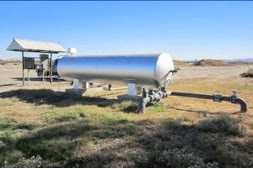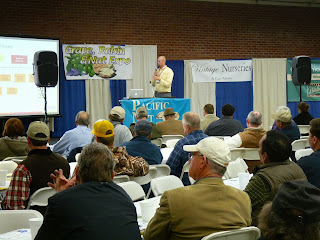TACKLING CALIFORNIA’S GROUNDWATER CHALLENGES
The Simplicity of Complex Groundwater Management
Patrick Cavanaugh, Editor and Laurie Greene, Associate Editor
At the San Joaquin Valley Groundwater Overdraft Meeting in Tulare TODAY, David Orth, General Manager of Kings River Conservation District, Fresno, presented his assessment of the groundwater challenges California faces.
 |
|
David Orth, General Manager, Kings River Conservation District |
“We have tried to manage groundwater, but unfortunately, overdraft has become the report card and it is giving us somewhat of a poor grade just because of overdraft conditions,” Orth beganOrth thinks the challenge for all of us is to move beyond our lament, “‘If only we could get our surface water back, we could solve this issue.’ The reality is that things have changed; more demand and regulations have impacted our surface water. So we have to shift our discussion to, ‘How do we manage our groundwater going forward so that we can sustain Valley agriculture and deliver the economic base we rely upon.’”
“We will have to make some hard decisions,” warns Orth. “One of our challenges is that we have a tendency to want to make this really big Central Valley or the entire Tulare Lake Hydrologic Region level numbers, which are millions of acres, make big overdraft numbers.”
“If we break this down into little parts, local groundwater basins, and look at the tools that those groundwater agencies are using, and try to figure out what can we do to help them reach sustainability, I think we can find success,” he said.
“However,” Orth continued, “it will require discussions on: What are sustainable levels of groundwater pumping? What kinds of land use controls do we have to implement, if any? Do we need to become more aggressive in capture and recharge of flood flows into our groundwater basin, which takes investment in infrastructure?”
 |
| Concerned Growers Listen Intently to Speakers |
Orth believes this is not that complicated. The only ways to achieve short-term groundwater balance are to reintroduce lost surface water supplies, thereby sustaining Valley agriculture, or take land out of production. Orth commented that it is a very tough choice, but it is no more complicated than that.
“Those are the only two options; there isn’t a silver bullet third piece of this,” Orth said.
“Things we need to do are going to be a different,” Orth stated. “I believe we are up to the challenge; a number of agencies in the Valley are already focused on this. And the real exciting thing is that our grower community, the people who actually pump and benefit from the ground water, are starting to recognize that it is in their long-term interest to be part of a solution.
“I think we are up to the challenge,” Orth said.
Kings River Conservation District is 1.2 million acres, covers the greater Fresno Area with the San Joaquin River on the north and the Tulare Lake Basin to the South. It serves as the umbrella agency for the 28 water rights holders in the Kings River System.








